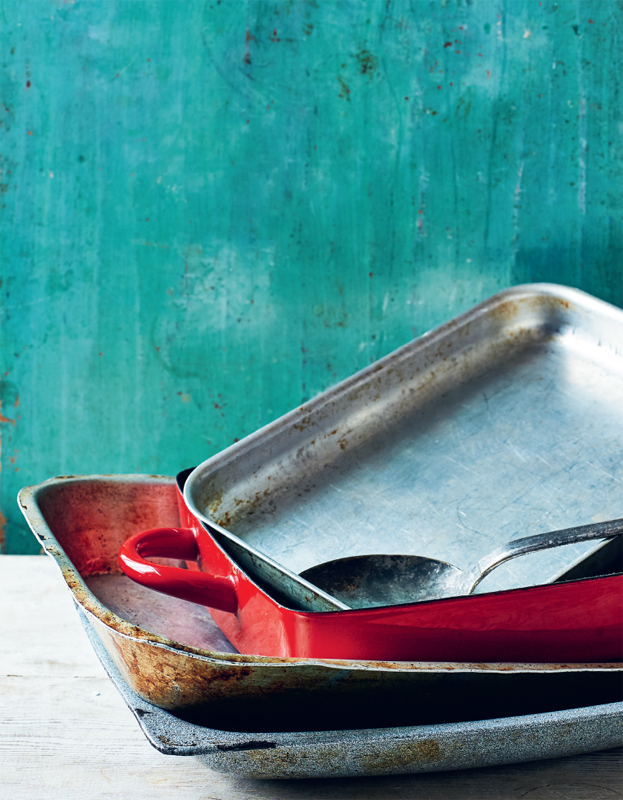
Make friends with your roasting tray
All the recipes in this book have been developed and tested in a rectangular roasting tray measuring 30 x 20 x 5cm. For some of the snacky dishes, such as chicken scratchings, sausage rolls, corn fritters, whole Camembert and the like, the size of the tray isn’t crucial, so long as the food isn’t crowded together (in which case it will steam). For dishes where the food fills the tray to a particular height, like porridge, brownies, bread rolls and cake, it’s important to use the recommended size, otherwise they might not cook successfully, and/or in the specified time. For dishes such as Chicken Thighs with Creamy Leek and Caper Sauce it’s best to use the recommended tray size; something larger, for example, could see the sauce spread too thin and burn.
In fact, if you want to make the most of this book, it would be a good idea to invest in a roasting tray of the recommended size. It won’t accommodate an enormous Christmas turkey, obviously, but how often do you use a roasting tray that large? What you will have, though, is a single piece of versatile kitchen equipment that’s ideal for cooking a wide range of dishes, from cakes to joints of meat.
If you’re shopping for a new roasting tray, use the same rule that applies for pans and baking sheets: opt for something solid and the best quality that you can afford. Steel/stainless steel (or multilayered stainless steel and aluminium), anodised aluminium and cast iron are popular choices; or, if you want to break the bank, copper is wonderful. A heavier tray resists warping and distributes the heat more evenly, so your cooking results will be better overall. And make sure you’re buying the right size: the measurements previously mentioned refer to the inside measurements of the tray.
Go for a roasting tray with rounded corners for easy cleaning, as well as handles for safely transferring it in and out of the oven. A couple of recipes in this book call for cooking food on a rack on top of the roasting tray as well as inside it; some trays come with racks when you buy them, which is great but not essential. An ordinary metal rack, or even the oven rack itself, can serve the purpose by simply sitting on top.
A final word on the vagaries of ovens: for a variety of reasons, all ovens have their own temperaments. Age, make, model, insulation and settings are all factors that can affect the accuracy of an oven’s temperature reading, and therefore the expected time it takes a dish to cook. What’s more, heat can vary across different parts of the oven chamber, so even using an oven thermometer does not completely solve the problem. Roasting tray cooking is a brilliantly convenient way to cook, but you can’t just wander off; it requires you to keep an occasional eye on things, turn the tray round now and then (except when baking cakes, as the sudden drop in temperature can cause your masterpiece to sink or crack) and keep your senses alert for when the dish is done.
Happy roasting tray cooking!